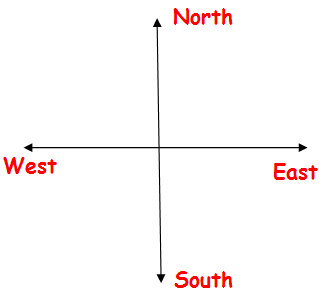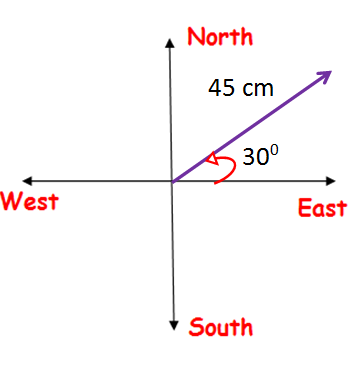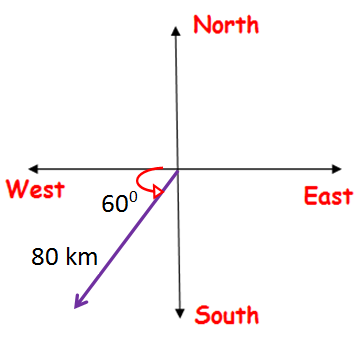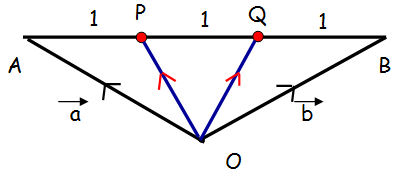HOW TO REPRESENT DISPLACEMENT GRAPHICALLY IN VECTOR
Subscribe to our ▶️ YouTube channel 🔴 for the latest videos, updates, and tips.
If we want represent displacement in a graph, first we have to draw the coordinate axis and mark the directions.
In the right corner - Mark the direction (East)
In the left corner - Mark the direction (West)
In the top corner - Mark the direction (North)
In the bottom corner - Mark the direction (South)

Key Concept
1. North of west means, it travels from west to north. To represent the particular angle, move the horizontal line to the north side clockwise.
2. West of north means, it travels from north to west. To represent the particular angle, move the vertical line to the west side anticlockwise.
Example 1 :
Represent graphically the displacement of
45 cm 30° north of east
Solution :
To represent the above statement graphically, we have to mark the coordinate axis and write the directions.

North of east means, it travels from east to north. To represent the particular angle, move the horizontal line to the north side anticlockwise.
Example 2 :
Represent graphically the displacement of
80 km 60° south of west
Solution :
To represent the above statement graphically, we have to mark the coordinate axis and write the directions.

South of west means, it travels from west to south To represent the particular angle, move the horizontal line to the south side anticlockwise.
Example 3 :
Prove that the relation R defined on the set V of all vectors by ‘ a vector R b vector if a vector = b vector is an equivalence relation on V.
Solution :
In order to prove the given is in equivalence relation, we have to prove there exists, reflexive, symmetric and transitive.
R is said to be reflexive if a is related to a for all a ∈ S
Reflexive :
The given is reflexive, because in (a, b) ∈ S a and b are equal.
So, we may write it as (a, a) and is it reflexive.
Symmetric :
There exists symmetric relation, if (a, b) ∈ S, then (b, a) also exists in this relation. (Since they are equal).
Transitive :
In a R b (a = b)
In b R c (b = c)
From this, we may decide that a = c.
Hence it is transitive.
Example 4 :
Let a vector and b vector be the position vectors of the points A and B. Prove that the position vectors of the points which trisects the line segment AB are (a vector + 2b vector)/3 and (b vector + 2a vector)/3.
Solution :

OA = a vector, OB = b vector
The point P divides the line segment joining the points AB in the ratio 1 : 2 (internally)
= (n a vector + m b vector)/ (n + m)
= (nOB + mOA)/(n + m)
= [1(a vector) + 2(b vector)]/ (1 + 2)
= (a vector + 2 b vector)/3
The point Q divides the line segment joining the points AB in the ratio 2 : 1 (internally)
= (nOB + mOA)/(n + m)
= [2(a vector) + 1(b vector)]/ (2 + 1)
= (2a vector + b vector)/3
Subscribe to our ▶️ YouTube channel 🔴 for the latest videos, updates, and tips.
Kindly mail your feedback to v4formath@gmail.com
We always appreciate your feedback.
About Us | Contact Us | Privacy Policy
©All rights reserved. onlinemath4all.com

Recent Articles
-
10 Hard SAT Math Questions (Part - 45)
Jan 18, 26 06:52 PM
10 Hard SAT Math Questions (Part - 45) -
10 Hard SAT Math Questions (Part - 44)
Jan 12, 26 06:35 AM
10 Hard SAT Math Questions (Part - 44) -
US Common Core K-12 Curricum Algebra Solving Simple Equations
Jan 07, 26 01:53 PM
US Common Core K-12 Curricum Algebra Solving Simple Equations
